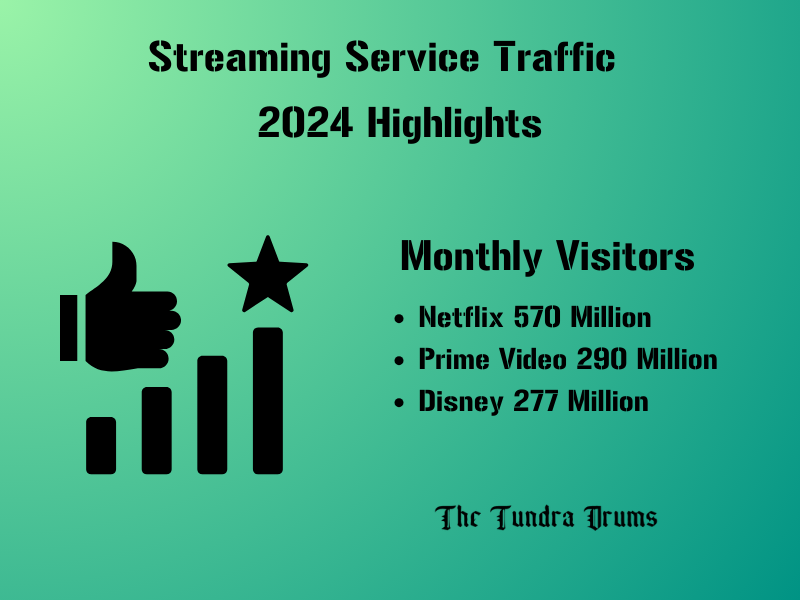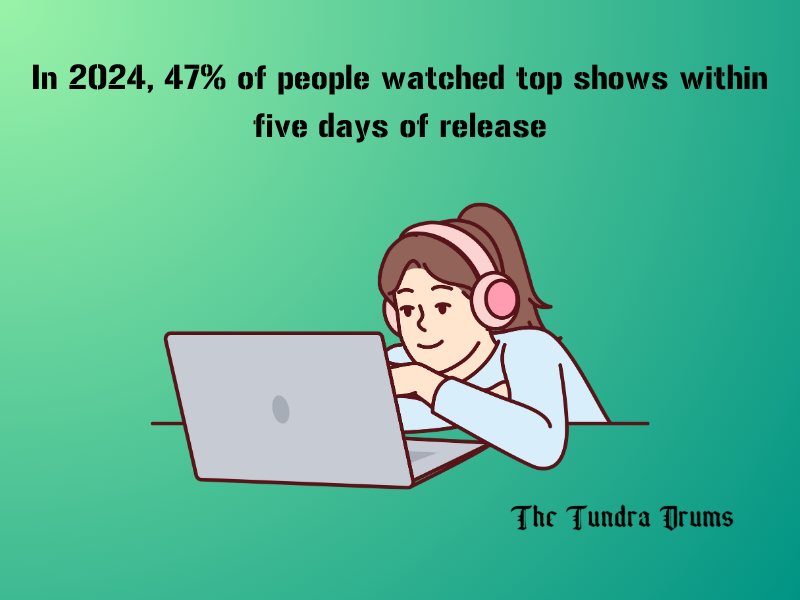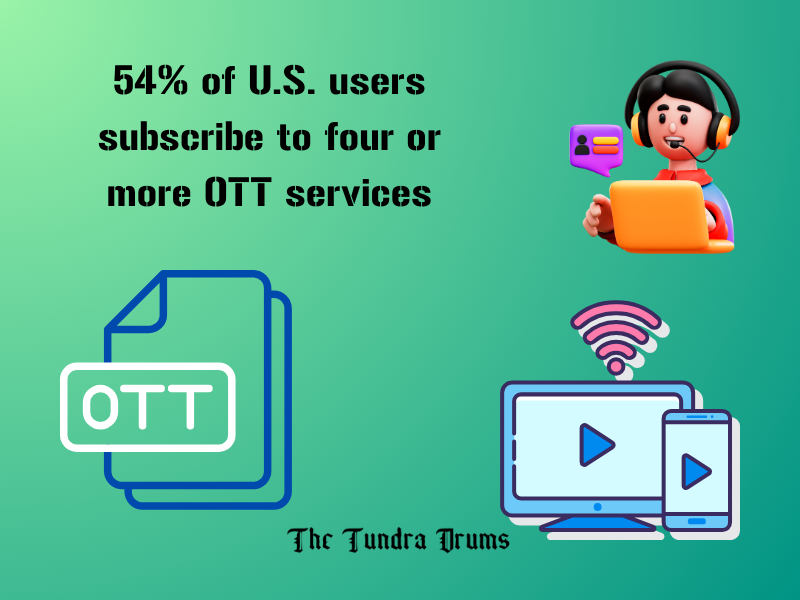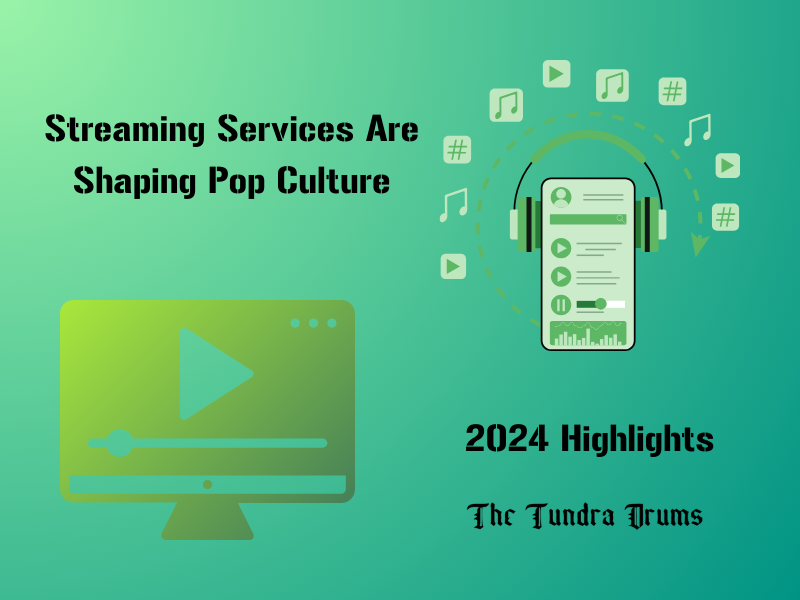Streaming services have become the main source of entertainment nowadays. Platforms like Netflix, Disney Plus, and Prime Video are not just changing how we watch TV shows and films but also shaping cultural developments, discussions, and behaviors. This article looks at how streaming services are shaping popular culture nowadays, focusing on critical traits and impacts in 2024.
Streaming Service Traffic and Popularity 2024 Highlights
Streaming services have become popular, with hundreds of thousands traveling these systems each month. As of January 2024, Netflix has about 570 million monthly visits. Prime Video follows with 290 million visits, and Disney Plus is leading with 277 million visits. This significant traffic shows how crucial these platforms have become in our everyday lives. It also influences what we watch and talk about.

Another key trend is binge-watching. A remarkable 72% of U.S. adults pick out as binge-watchers, which interprets to approximately 96 million households undertaking Over-The-Top (OTT) content material at some stage in the primary half of 2023. This binge-looking tradition has changed how famous cultural moments are created and shared, with whole seasons of shows often watched inside days before their launch.
Binge-Watching Culture
Binge-watching has become a key part of today’s popular culture. Streaming services now allow us to watch entire seasons of shows in one go, changing how we connect with content. Instead of waiting for weeks, viewers can enjoy a full story immediately, leading to quick and lively online discussions.
This trend doesn’t just change how we watch TV; it also affects fashion. The Impact of pop culture on modern fashion trends can be seen as popular show styles quickly becoming part of everyday fashion, thanks to the convenience of binge-watching.

This brief intake highlights the effectiveness of many streaming services’ binge-release approach. It additionally tells how these services power cultural conversations, with people talking about the same shows.
Subscriber Behavior and Preferences
Streaming services have also modified how we consider subscriptions. In 2023, 25% of premium streaming video-on-demand (SVOD) subscriptions were ad-supported. It indicates that customers seek more flexible and low-cost ways to access the content. Many households now prefer these ad-supported trends as they balance cost and content material availability.

Most families subscribe to two or fewer streaming services. 54% of U.S. Net users subscribe to four or more OTT video services. This pattern displays the massive content available and the desire to access particular shows and films across platforms.
It’s projected that by 2026, over half of the U.S. Population will watch content from at least one ad-supported streaming service. Around 55.8% of net users are expected to use ad-supported video-on-demand (AVOD) services.
Advertising and Revenue Trends
As streaming services become more popular, they also attract extra advertising dollars. In 2024, brands are expected to spend $30.10 billion on streaming classified ads, compared to $60.56 billion on traditional TV ads. It highlights how companies adjust their techniques to increase their audiences where they are most energetic—online.
Live TV streaming, particularly in sports, is likewise on an upward trend. About 105.3 million Americans are projected to use digital systems to watch live sports in 2024, a 30.8% increase from the previous year. This increase clearly indicates that streaming isn’t always about on-demand content but real-time reviews that engage huge audiences.
Cultural Impact and Engagement of Live Streaming
Streaming services also create a considerable cultural impact through diverse content material that displays a variety of experiences and views.
The international reach of streaming platforms allows content from distinctive cultures to be shared broadly, creating an extra interconnected pop culture.
Shows like Squid Game and Money Heist have validated how content from one United States can grow into an international sensation, influencing everything from fashion to social media developments.
The Future of Streaming and Pop Culture
Live TV Streaming services will likely continue to shape pop culture in new and exciting ways. As technology evolves, those platforms will introduce more interactive content, customized experiences, and progressive methods to engage viewers. Whether via AI-pushed pointers or new types of content, streaming services are set to remain at the leading edge of cultural trends.
Conclusion
Streaming TV services are changing how we watch TV and films and reshaping pop culture. From influencing international trends to driving modifications in consumer behavior, these services are vital to how we experience and get entertainment in 2024.












